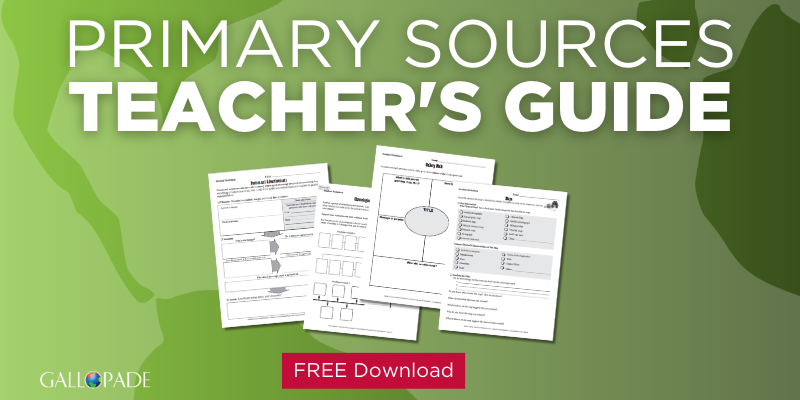Using Primary Sources in the Classroom
- gallopade
- Jul 10, 2018
- 3 min read
Updated: Jun 30, 2023

Online Teacher’s Guide for Primary Sources
Ideas, Strategies, Graphic Organizers, and More to “Dig Deep” into Primary Sources
Primary Source Strategies: Focus on the Details
Focusing on details is a key primary source skill for all grade levels. For young learners, focusing on details is a great way to introduce the basics of primary source analysis. Through observation, students can draw conclusions about the subject, time, place, and purpose of a variety of primary sources. Primary sources can help students understand people, places, and events throughout history.
At higher levels, students should be challenged with documents that require a greater depth of analysis. Primary sources can help students think critically and analytically, interpret events, understand points of view, and question various perspectives of history.
Guide students to focus on details in any source by following three general steps:
1) Make Observations
Analysis begins with careful observation and attention to detail. Encourage students to observe, note, and record details in the source.
2) Reflect & Analyze
Primary source analysis should use information and topics discussed in students’ daily lessons. Instruct students to reflect upon what they have observed about the source as well as their knowledge of the topic.
3) Draw Conclusions
Prompt students to draw conclusions about the context (time and place) of the primary source, determine the source’s message or purpose, and form a hypothesis about who the intended audience might have been. Students should support their conclusions with evidence from the primary source.
More Questions?
Encourage students to ask questions that are not readily answered by the content of the primary source. The questioning process will lead to more observations and reflections as students deepen
Primary Source Strategies: Focus on the Details
Primary sources are images, documents, artifacts, or other sources of information created during a specific time period, usually by someone who has first-hand experience of a specific historical event.
Why Study Primary Sources?
Primary sources are a window to understanding the people, places, and events of the past. Primary sources hold important clues, but you need to look, think, and ask questions!
Investigate! Become a Detective
To learn from primary sources, you need to investigate like a detective. Follow these steps to help you find the clues and draw conclusions about the source:
1. Observe the Primary Source
What kind of source is it? What do you notice first? What other details do you see? What is your first reaction? Look closely. Even the smallest details can be big clues to understanding the past.
2. Reflect and Analyze
The Source Itself:
What type of material was used? If written, was it handwritten? Is the source well-preserved? What key details did the creator include? Are there any special features you should note? The Historical Context:
When was it made? Who made it? What does the source tell you about the culture? Is a historical event being shown or described? The Author/Creator:
Who created it? What was the creator’s race, sex, age, class, occupation, religion, and political beliefs? Does any of this matter? Why or why not? The Purpose:
Why was this source made? What was the creator’s purpose for creating this primary source? Is the author expressing an opinion, stating facts, recording information, or telling a story? Was the artifact useful to people? What was its use? The Audience:
Who was meant to see or read this source? Who might have used it, read it, or valued it? How might people have reacted in the past?
3. Draw Conclusions
What can I learn from this source? What does it tell me about people, places, and events in the past? What is the purpose or message of this source? What do I still wonder about?

Comments